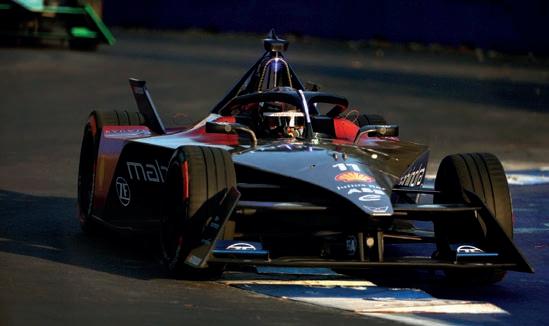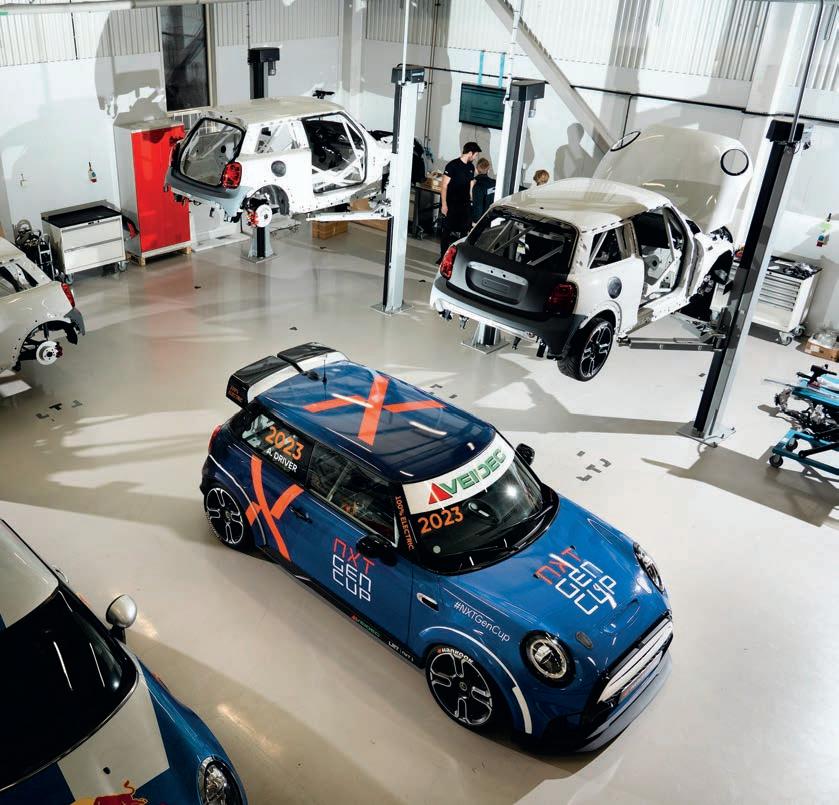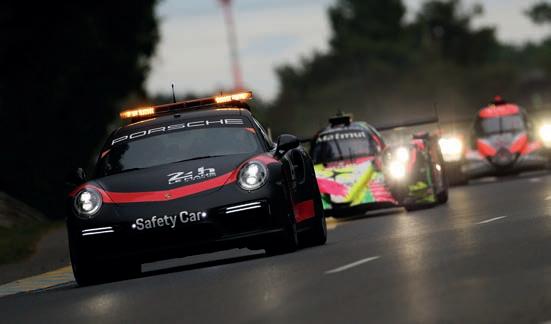
4 minute read
GEARING UP FOR A NEW SEASON
Öhlins first started working on components for NASCAR in the nineties. Today, we’re proud to be entering our second season as the exclusive supplier of suspension for the Next Gen cars. Since 2022, each team in the Cup Series has competed on an advanced, five-way adjustable version of the Öhlins TTR racing damper, featured in top-level racing such as the IndyCar Series and 24 Hours of Le Mans. Extensively developed and tested in collaboration with NASCAR, our highly adjustable Cup Series TTR damper delivers the precise level of handling and performance required to conquer any track.
NASCAR’s rule book dictates much of the engine architecture, allowing only one type of engine for any car competing. In the current generation of the engine rules, a 90-degree V8 with a compacted graphite iron block and aluminium cylinder heads powers all cars in the NASCAR Cup.
The engine must be naturally aspirated with a maximum displacement of 358ci (5.86 litres) and a maximum bore of 4.185in (106.299mm). Valve actuation must be via pushrods operated by a single, block-mounted camshaft, and only two valves per cylinder are allowed, seated in pent-roof combustion chambers.
Roller lifters actuate the pushrods, and all engines must breathe through a single throttle body mounted vertically above the engine’s centre.
Several independent engine builders and NASCAR teams prepare Chevrolet engines for competition.
‘The engines didn’t see much of an overhaul from a technical perspective going into the Gen 7 era,’ says Warren. ‘However, the body, aerodynamics, and gearbox changes have influenced the engine’s performance.’
Cooler running
At the front of the car, the Gen 7 features a large nose scoop with the radiator mounted directly behind it in a conventional way. Cooling air enters the radiator through the nose and exhausts through the top of the bonnet. That is a considerable change for NASCAR, as the previous generation cars had their engine bays sealed, meaning air around the engine could not evacuate effectively.
‘In the past, you were trying to block the radiator flow off as much as possible because this was beneficial to the aerodynamics,’ notes Warren. ‘In fact, radiator blocking was a higher performance differentiator than peak engine performance in many cases. But this would drive the engine temperatures really high, so the engine departments were spending most of their development resources on high temperature running.
‘It’s been hugely advantageous to flow more air through the radiator and have the exchanged air extracted from the engine bay efficiently with Gen 7. Oil temperatures of 300degF [149degC] were not uncommon in the previous generation, whereas 200degF [93degC] is now the engine teams’ target.’
The lower running temperatures have a knock-on effect on durability and reliability. Gen 7 engines can run longer and perform at a higher nominal output with less degradation during service than before, which is what drove NASCAR to introduce the air extracting bonnet package.
Each team is allowed to build 13 engines for each NASCAR Cup season. A full season, with exhibition races, includes 36 race weekends. Each team must use each one of their engines at least two times throughout the season.
To prevent teams from modifying or rebuilding engines during or between rounds of the series, NASCAR seals the cylinder heads to the block using wire fasteners that the team cannot take off for the duration of service time. If crews remove the wire seals at any point when the engine is in use, they will suffer penalties from the race organisers, often leading to a back-of-the-grid start position for the closest race, or a points deduction if the infraction is discovered after a race.
Although the heads are sealed to the block, teams still have access to all components under the valve cover, valley tray and oil pan, so spark plugs, valve springs and crankshaft bearings can all be changed during or between rounds.
Digital engineering
When it comes to learnings on the car, the Chevrolet NASCAR teams work together with a ‘GM one team’ approach. This means the GM Motorsports organisation engineering group and its technical centre are in constant collaboration to learn and advance the collective knowledge as fast as possible.
The start of the Gen 7 campaign for GM was a success. Chevrolet won the 2022 manufacturers’ championship with 1324 points and 19 wins. However, competition was close. In the 2022 season, the nominal performance difference between the front and rear of the pack was just 0.75s over a lap, and just 0.15s between first and tenth positions on a 35-second lap.
‘The battle is now more off-track than ever,’ says Warren. ‘Much of the fight is in the background with simulation and modelling. Digital engineering is where we find performance.’
The Gen 7 regulations were designed to be package protected for future generations of NASCAR powertrains, which is looking increasingly likely to include a hybrid drive system at some point. The introduction of hybrid is very attractive for GM and the other OEMs competing in NASCAR as they evolve their road cars down the inevitable path of hybrid and EV power.
General Motors is currently also operating in LMDh with its Cadillac brand and will be taking learnings from that programme into its future hybrid race and road car offerings. This kind of technology transfer will be crucial for GM as it too has committed to a complete EV transition in the future.
For all levels of racing, TotalSim helps you understand your vehicle’s aerodynamics and translates that information to reduce lap time.
HOW TOTALSIM HELPS: Expert knowledge from NASCAR, IndyCar, Formula One and more Race engineering experience Reverse engineering and 3D scanning capabilities



Decades of experience in applying digital engineering and computational fluid dynamics (CFD)
Active Polymer Technologies
Design • Analysis • Manufacture
We specialise in the design and development of technologically advanced polymer products for use within motorsport, defence and industry.
Our design activities are dominated by expert use of the latest Finite Element Analysis software.


We manufacture high performance polymer products including:

• Low ProfileCVboots
• High performance PTFE Linedshaftseals

• Bladder accumulators
• Custompolymersolutions
• AV mounts
For moreinformationvisit: www.active-polymer.com
Tel: +44(0)7756 515772 • Email: support@active-polymer.com










